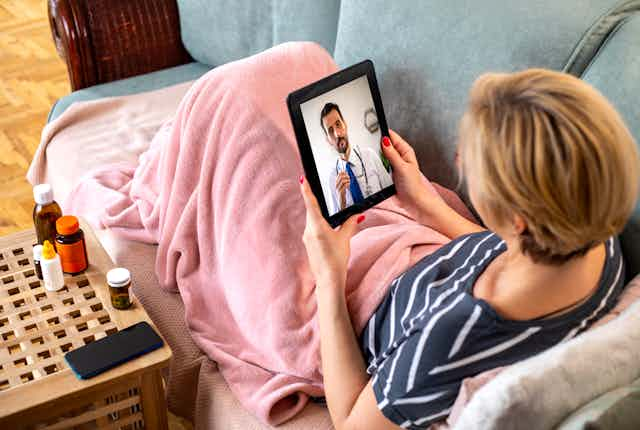Access to telehealth abortion care can determine whether a person can obtain an abortion in the United States. For young people and those living on low incomes, telehealth makes a critical difference in getting timely abortion care.
These are the key findings from our recent studies published in the American Journal of Public Health and the Journal of Medical Internet Research.
We surveyed 1,600 people across the country who accessed telehealth abortion in 2021 and 2022, prior to the Dobbs v. Jackson Supreme Court decision in June 2022 that led to abortion bans in much of the U.S. South and Midwest.
Telehealth abortion, which has been widely available in the U.S. only since 2021, allows patients to be evaluated remotely by a licensed provider and, if medically eligible, receive abortion medications in the mail. Our research has shown that this type of abortion care is extremely safe.
Nearly all the patients we surveyed had positive experiences with telehealth abortion: They were satisfied, trusted their telehealth provider, felt cared for and felt telehealth was the right decision. Our research shows that for many patients, telehealth offers important benefits over abortion care from a clinic.
Why it matters
Since 14 states have banned abortion as of January 2024 following the Dobbs decision, patients have been traveling long distances to access care. This puts increased pressure on clinics in states where abortion remains legal.
Research has shown that the consequences of abortion bans are highly unequal. People of color, young people and those living on lower incomes are disproportionately affected by abortion restrictions. These are the same people who stand to benefit the most from access to telehealth abortion.
Nearly 1 in 10 abortions in the U.S. are now done via telehealth. At the same time, access to telehealth abortion is under threat. The Supreme Court will decide on the Alliance for Hippocratic Medicine v. FDA case in 2024, which could limit access to telehealth abortion across the country.
While there will always be a need for in-person abortion care, and many patients prefer it, our research shows that telehealth can make a critical difference for many. Telehealth can bring an otherwise impossible abortion within reach, especially for people who have been underserved in health care. Restrictions on telehealth abortion threaten equitable abortion access.
Telehealth allows patients to avoid a significant amount of travel to an abortion clinic, which has become prohibitively difficult as abortion clinics have closed in record numbers. Avoiding travel can make abortion care much more accessible without the need to arrange for transport, time off from work and child care. Telehealth abortion appointments are usually available sooner, and in many cases they are more affordable than abortion care from a clinic. Telehealth also allows patients to tell fewer people about their abortion decision.
When we asked people what would have happened if they had not been able to have a telehealth abortion, 43% of those we surveyed said they would not have been able to get a timely abortion without telehealth.
This was more likely to be true for young people, those living on lower incomes, those living in rural areas and those who lived far from an abortion clinic. While only 2% of patients said they would have continued the pregnancy if they had not had access to telehealth abortion, we expect that this proportion would have been substantially higher if we replicated this study after Dobbs.
What’s next
Our future research will look at the structural changes necessary to ensure that the benefits of telehealth abortion are available equitably. We will also test how to tailor telehealth abortion so that it reaches people historically excluded from health care.
The Research Brief is a short take on interesting academic work.

